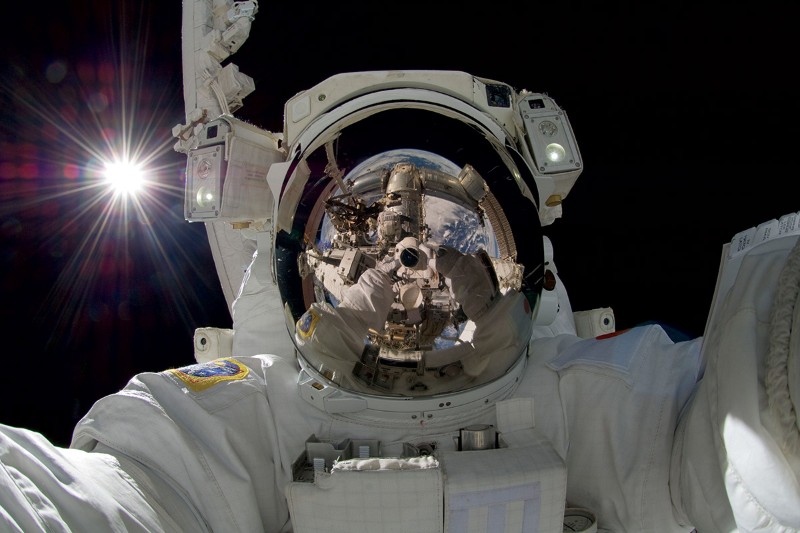For New Scientist, a review of Nicholas Mirzoeff’s book How to See the World
NICHOLAS MIRZOEFF, a media, culture and communication professor at New York University, wants to justify the study of visual culture by describing, accessibly, how strange our visual world has become.
This has been done before. In 1972 artist and writer John Berger made Ways of Seeing, a UK TV series and a book. This was also the year that astronaut Harrison Schmitt took the Blue Marble picture of Earth from Apollo 17, arguably the most reproduced photograph ever.
By contrast, in How to See the World, Mirzoeff’s mascot shot is the selfie taken by astronaut Akihiko Hoshide during his 2012 spacewalk. This time, Earth is reflected in Hoshide’s visor: the planet is physically different and changing fast. Transformations that would have been invisible to humans because they took place so slowly now occur in a single life. “We have to learn to see the Anthropocene,” writes Mirzoeff.
Images are ubiquitous, and we have learned to read them as frames in a giant, self-assembling graphic novel. Visual meaning is found in the connections we make between those images. We used to flock to the cinema for that sort of peculiar dream logic, but now we struggle to awaken. Mirzoeff cites artist Clement Valla writing that “we are already in the Matrix”.
Simple iconography is in retreat. During the 1962 Cuban missile crisis, Soviet missile trailers were visible in photos shown to the media. By 2003, the photos that US general Colin Powell showed of supposed weapons-making kit were lathered in yellow labelling, claiming to show what we could not in fact see.
Tracing the political, social and environmental implications of our visual culture, in words and black and white images, is a job of work. Mirzoeff succeeds: this is a dizzying and delightful book.

